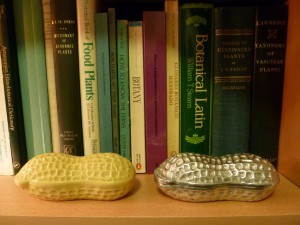Over at National Public Radio, a story of an inveterate tinkerer who built a better peanut sheller (and much else besides). Not the kind of thing I personally need. I enjoy creating masses of biodegradable debris while I snack. In Africa, however, the hero of the story:
noticed African women shelling thousands of peanuts by hand. It was slow, painful work that made their fingers bleed. Before he left the country, he made a promise that he was going to send them back a peanut sheller. But he ran into a problem. “When I came back to America to buy it, it didn’t exist,” he says.
Bottom line. He made it, it works. And rather than simply give it away, he sells the plans.
That makes farmers investors in a minifactory. They get a set of instructions and concrete molds that allow them to build their own … shellers.
And here it is in action. I like that they don’t bother separating the debris from the nuts, which is easy and satisfying to do by hand.
But that’s not all the peanut news for today. Remember the “cute plastic peanut-shaped toys which open to play a jingle“? 1 Well the toy in question finally made it to its intended owner, our very own friend, the genuine Mr Peanut. 2 And he noticed a very strange thing.
Can you spot it? 3
That’s right! The cute plastic Chinese peanut on the left is absolutely identical to the handcrafted Mexican pewter peanut box on the right, down to the last little cell on the surface. And it seems that the pewter version is actually less crisply detailed then the Chinese. So did the Mexican artisan use the Chinese peanut as the form for a mold? Is there some third megapeanut ancestral to them both? Are there other examples of a more-or-less worthless trinket being copied in a more valuable material, rather than the other way round? And is this enough questions for now?
- Of course not, that why it’s linked.
- No fake he.
- And no, this is nothing to do with his taste in books.
